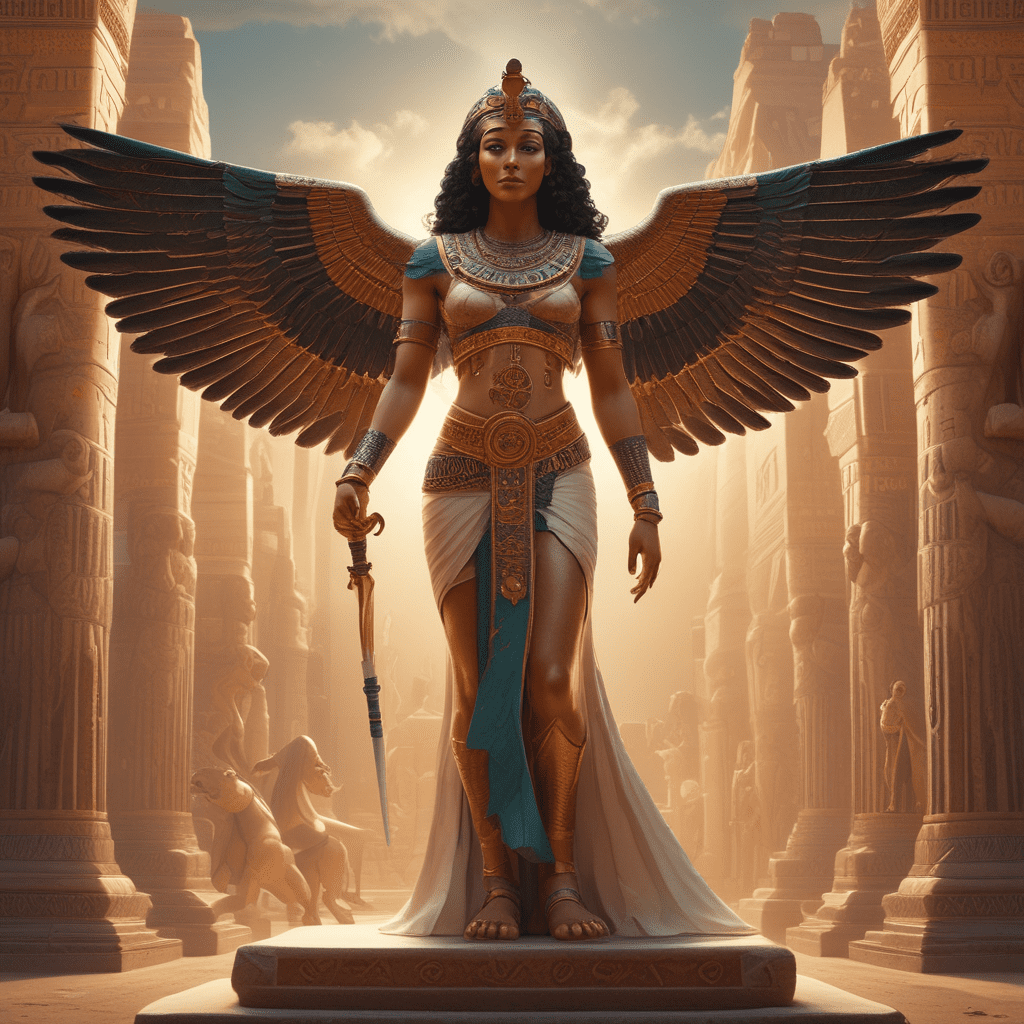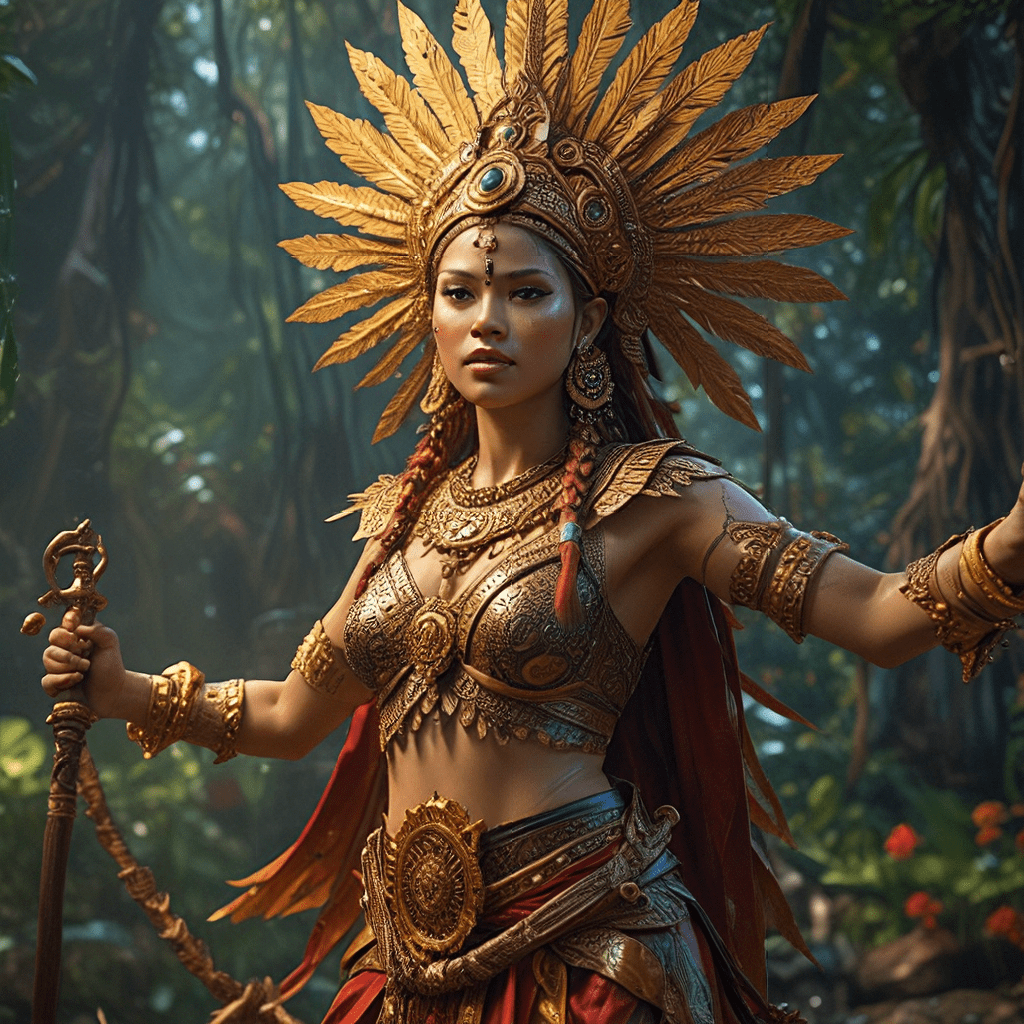Jaguars: Guardians of the Rainforest
In the lush rainforests of South America, jaguars hold a revered position as guardians of the ecosystem. Their sleek, spotted coats and piercing eyes have captivated indigenous cultures for centuries, inspiring tales of their supernatural powers and spiritual significance.
For the ancient Maya, jaguars represented the embodiment of the night sky, their nocturnal habits mirroring the celestial dance of the stars. The Aztec people believed them to be the physical manifestation of Tezcatlipoca, the god of darkness and sorcery, fearing their ability to transform into shapeless shadows that haunted the night.
Beyond their mystical associations, jaguars play a crucial ecological role. As apex predators, they control populations of herbivores, maintaining a delicate balance within the rainforest ecosystem. Their sharp claws and powerful jaws enable them to hunt even the largest prey, including caimans and tapirs, preventing overgrazing and preserving biodiversity.
Serpents: Symbols of Renewal and Rebirth
Throughout South American mythology, serpents possess a multifaceted symbolism, often representing both creation and destruction, life and death. In the Amazonian rainforest, the mythical anaconda is revered as a guardian spirit, believed to protect the waters and its inhabitants. The indigenous people of the Andes venerate the rainbow serpent, a celestial being associated with water, fertility, and the cyclical nature of time.
Serpents frequently appear as symbols of renewal and rebirth. In many cultures, they are depicted shedding their skin, shedding the old and making way for the new. This transformative ability extends to their spiritual significance, representing the potential for personal growth, transformation, and the shedding of negative influences.
Birds: Messengers of the Divine
In the skies of South America, birds soar as messengers of the divine, carrying messages between the realms of humans and spirits. In Andean mythology, the condor is considered a sacred bird, its majestic flight representing the connection between heaven and earth. The hummingbird, with its tiny size and vibrant colors, is believed to possess healing powers and is associated with love and fertility.
Birds often serve as intermediaries between the natural and supernatural worlds. Their ability to soar through the air grants them a unique perspective, allowing them to witness both the beauty and the challenges faced by humans. As such, they are often invoked in rituals and ceremonies to seek guidance, protection, and inspiration from the divine.
Monkeys: Tricksters and Creators
In South American folklore, monkeys occupy a playful and enigmatic position as tricksters and creators. The mischievous Capuchin monkey is known for its cunning and ability to outsmart other animals, often playing pranks and causing chaos. In some cultures, monkeys are believed to possess the power to create and shape the world, with their tails representing the threads of destiny that they weave.
Monkeys challenge societal norms and disrupt traditional roles, mirroring their liminal position between humans and animals. Their antics often contain lessons about the importance of adaptability, resilience, and the acceptance of one's own flaws and limitations.
Spiders: Weavers of Destiny
In the intricate webs spun by spiders, South American mythologies find a profound symbol of creativity, destiny, and the interconnectedness of all things. The spider goddess Anansi, prevalent in African and Caribbean folklore, is known for her ability to weave intricate stories and manipulate events through her webs. In many cultures, spiders are believed to possess the power to grant wishes and protect against harm.
6. Condors: Lords of the Sky
In the Andean highlands, soaring above snow-capped peaks, condors reign as majestic lords of the sky. Their vast wingspans and piercing gaze have inspired awe and reverence in indigenous cultures for millennia. The Incas believed condors to be sacred messengers of the sun god, Inti, carrying prayers and offerings to the heavens.
Condors embody power, strength, and resilience. Their ability to ascend to great heights symbolizes the potential for spiritual elevation and the pursuit of knowledge. In Andean mythology, condors are often associated with death and rebirth, representing the cyclical nature of life and the transition to the afterlife.
7. Whales: Guardians of the Ocean
Along the vast coastlines of South America, whales emerge as enigmatic guardians of the ocean depths. Their immense size and gentle nature have captivated coastal communities, inspiring tales of their wisdom and their connection to the supernatural. In Mapuche mythology, whales are revered as marine spirits known as "Ngen," believed to possess healing powers and the ability to grant wishes.
Whales represent the interconnectedness of all living things and the importance of respecting the delicate balance of the marine ecosystem. Their songs, echoing through the ocean, are believed to carry messages of wisdom and guidance, reminding humans of their spiritual connection to the natural world.
8. Llamas: Sacred Animals of the Andes
In the high altitudes of the Andes, llamas have long been revered as sacred animals, serving as a vital source of sustenance and transportation for indigenous communities. The ancient Incans believed llamas to be gifts from the gods, their soft wool providing warmth and protection against the harsh mountain climate.
Llamas embody patience, endurance, and resilience. Their ability to traverse treacherous terrain reflects the challenges and triumphs faced by Andean people. In Inca mythology, llamas were sacrificed to the gods as a symbol of devotion and gratitude. Their presence in Andean culture continues to connect people to their heritage and the traditions of their ancestors.
9. Piranhas: Feared Predators of the Amazon
In the murky depths of the Amazon rainforest, piranhas lurk as feared predators, their sharp teeth and aggressive behavior striking terror into the hearts of humans and animals alike. Indigenous cultures have long been aware of the piranhas' formidable nature, incorporating them into myths and legends as symbols of danger and the unpredictable forces of the rainforest.
Despite their reputation, piranhas play a crucial role in the Amazon ecosystem, keeping populations of herbivorous fish in check and maintaining a delicate balance. Their presence reminds us of the inherent dangers lurking within the rainforest and the importance of respecting the boundaries of the natural world.
10. Caimans: Ancient Spirits of the Swamps
In the labyrinthine swamps of the Amazon and Orinoco basins, caimans emerge as ancient spirits, their armored bodies and predatory instincts inspiring awe and caution among indigenous communities. In many cultures, caimans are believed to possess supernatural powers, including the ability to communicate with the spirit world and to control the waters they inhabit.
Caimans represent the primal forces of nature, balancing the delicate ecosystem of the swamps. Their presence reminds us of the interconnectedness of all living things and the importance of respecting the traditions and beliefs of indigenous communities who have lived in harmony with these creatures for centuries.
FAQs
Q: What is the significance of animals in South American mythology?
A: Animals play a vital role in South American mythology, representing a diverse range of spiritual beliefs, cultural values, and ecological knowledge. They embody the power of nature, the interconnectedness of all living things, and the importance of respecting the delicate balance of the ecosystem.
Q: Which animals are considered sacred in South American cultures?
A: Jaguars, condors, llamas, whales, and caimans are among the many animals considered sacred in South American cultures. They are revered for their spiritual significance, their role in maintaining ecological balance, and their connection to the supernatural world.
Q: How do animals influence the daily lives of indigenous communities?
A: Animals provide sustenance, transportation, and companionship to indigenous communities in South America. Their presence shapes cultural practices, religious beliefs, and traditional knowledge. Respect for animals is deeply ingrained in the values of these communities, who recognize their interdependence with the natural world.


